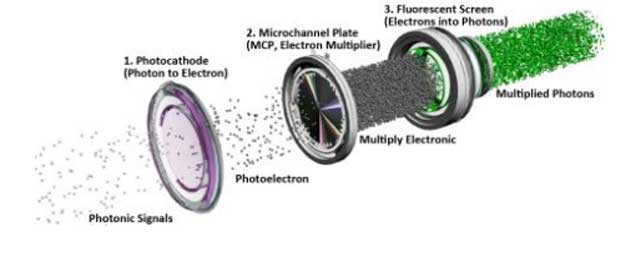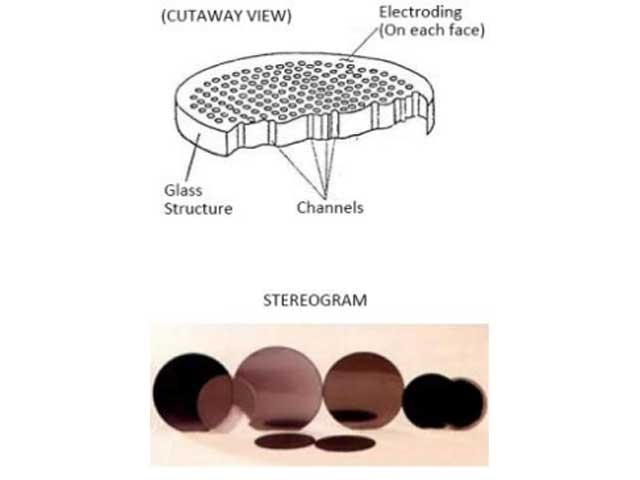
An image intensifier(I2) tube is a device that intensifies (or amplifies) low light level images to levels that can be seen with the human eye or detected by digital image sensors.

(Image Intensifier Tube Structure)
All model I2 tubes consist of three main components, a photocathode, Microchannel Plate (MCP) and a phosphor screen. The characteristics of each component, as well as the careful consideration of any available options, will contribute to the overall quality of the resulting image.
Image Intensifier Tubes collect the existing ambient light through the objective lens of the night vision device.
The light may originate from natural sources, such as starlight or moonlight, or from artificial sources such as streetlights or infraredilluminators.
The low level of incoming light, which consists of photons, enters the tube through its input window and strikes the photocathode.
The photocathode is a very thin light sensitive layer deposited on the inside of the I2 input window that converts the photons into electrons and releases them into the vacuum of the tube.
All modern I2 tubes operate under a vacuum of about 10-9 to 10-10 torrs, which is essential to protect the photocathode from oxidation and rapid destruction.
Once released by the photocathode, these photo-electrons are accelerated and focused by a high electrical field towards the MCP.
The MCP is a thin glass disc, less than a half millimeter thick, which contains millions of small channels.

(Microchannel Plate)
When an electron coming from the photocathode strikes the inner wall of one channel, several secondary electrons are generated by the impact.
Each of these secondary electrons will in turn be accelerated within the MCP by another high electrical field, once again striking the inner wall of the channel, and generating even more secondary electrons.
This process is repeated along the depth of the MCP channels.
For each electron that enters the MCP, approximately one thousand electrons are generated and subsequently accelerated from the output of the MCP by a third electrical field towards the phosphor screen.
The phosphor screen is a thin phosphorous light emitting layer deposited on the inside of the output window of the intensifier tube (usually fiber optics) which converts the electrons back into photons.
When the multiplied flow of electrons out of the MCP strike that layer, tens of thousands of photons will be generated for every singal photon that was initially converted by the photocathode.
This entire multistage process creates an“ intensified” image, much brighter than the original image, which can subsequently be seen by the human eye.
